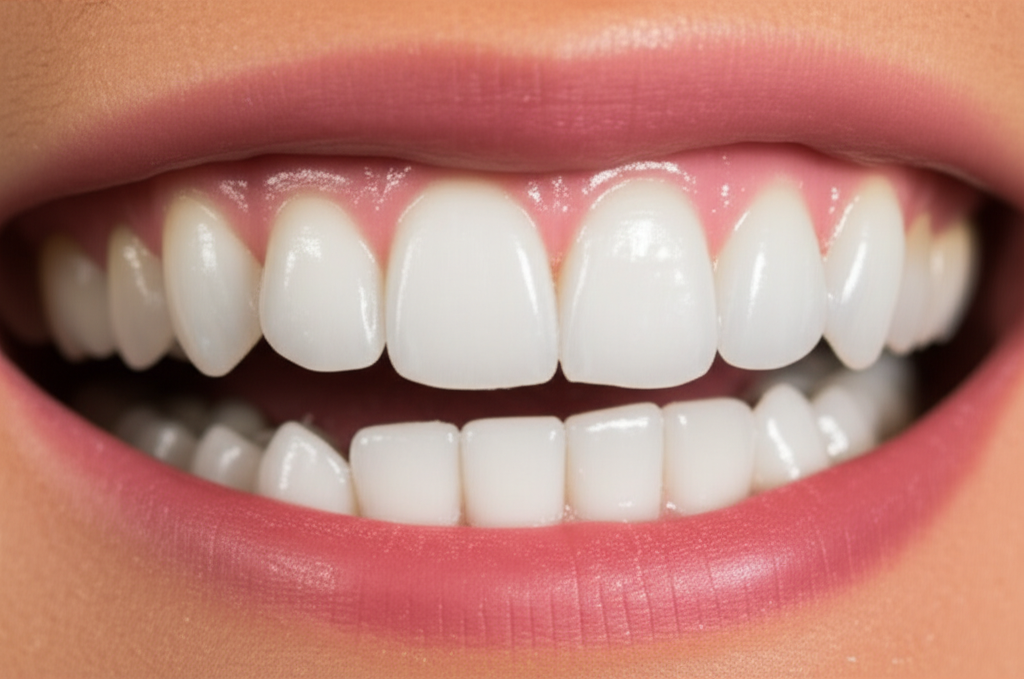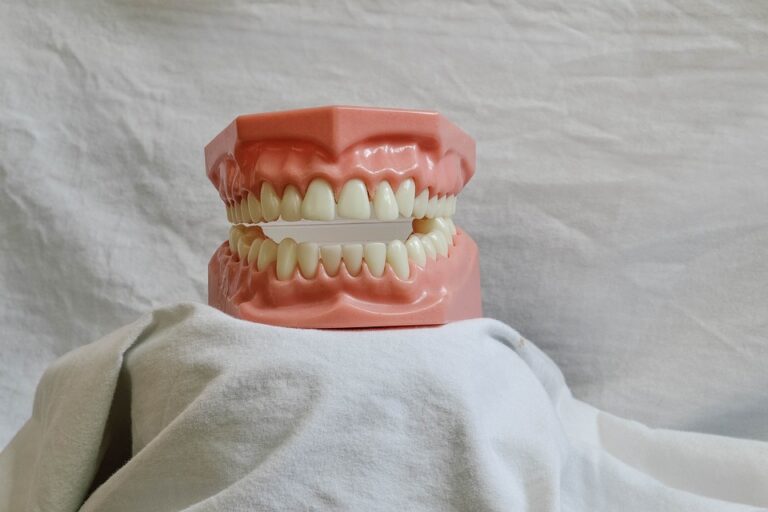
Does MAGI Medicaid Cover Dental Implants? Your State-by-State Guide & Realistic Alternatives
That sinking feeling when you hear your dentist say, “You need a dental implant,” is one that’s hard to shake, especially if you’re living on a tight budget or using Medicaid for your health care. Add to that the worry—do Medicaid or MAGI Medicaid plans even pay for dental implants for adults? Or are you left looking for something cheaper that still works?
You’re not the only one. Millions of Americans deal with the problem of missing teeth and the big cost of replacing them. If you want to know about Medicaid dental implant coverage, especially under MAGI Medicaid, we’re here to make it simple. Let’s answer your biggest questions in plain English.
In This Article
What We’ll Cover:
- What Is MAGI Medicaid—and How Does Dental Coverage Work?
- Why Adult Dental Benefits Vary So Much by State
- When Does Medicaid Cover Dental Implants? (And What Counts As “Medically Necessary”)
- State-By-State Highlights: Where Implants Might Be Covered
- Your Medicaid-Covered Alternatives to Implants
- Smart Strategies: Making Dental Implants Affordable Without Medicaid
- Empower Yourself: Next Steps to Protect Your Smile
- Key Takeaways for Your Oral Health
What Is MAGI Medicaid—and How Does Dental Coverage Work?
Let’s start with the basics. MAGI stands for Modified Adjusted Gross Income—it’s a way used to see if you can get Medicaid under the Affordable Care Act. If you’re an adult who gets Medicaid because of your income (not because you’re disabled or older), you’re probably on a MAGI Medicaid plan.
But here’s the big thing—dental care for adults under Medicaid isn’t required by the federal government. So, not every state offers the same benefits. Each state makes its own rules.
The Quick Answer: Does MAGI Medicaid Cover Dental Implants?
Most of the time? No. In almost every state, dental implants are seen as extra or cosmetic for adults and are not included by MAGI Medicaid. But, things can be complicated. There are a few exceptions—keep reading to see if your case or state could be different.
Why Adult Dental Benefits Vary So Much by State
If you’re wondering why some states help you fix your teeth and others barely cover anything, you’re not alone.
Why It’s So Different
- Children get coverage: Federal rules say Medicaid has to cover lots of dental benefits for kids—this is called EPSDT (Early and Periodic Screening, Diagnostic, and Treatment).
- Adults? Not really: States pick if they’ll give dental benefits to adults, and most give just a little. Only 19 states offer full dental coverage for adults. Others offer limited, emergency-only, or no coverage at all.
What Does “Comprehensive,” “Limited,” or “Emergency-Only” Mean?
- Comprehensive: Includes checkups, fillings, pulling teeth, root canals, and sometimes more.
- Limited: Might cover cleanings, pulling teeth, and simple fillings, but usually not much else.
- Emergency-Only: Only pays for dental care when you’re in pain or have a bad infection.
Fun fact: Even in “full” states, dental implants almost never get covered.
When Does Medicaid Cover Dental Implants? (The “Medical Necessity” Exception)
If you’ve read this far, you probably hope there’s a loophole or special rule that could help. You’re right—medical necessity is your magic word.
What Does “Medical Necessity” Mean for Dental Implants?
Medicaid will almost never pay for dental implants unless you really need them for your health—not just to look good.
For example:
- You had a bad accident and dentures won’t work.
- You have a birth condition (like cleft palate) and can’t eat or talk properly without implants.
- You just can’t wear dentures, even after trying, maybe because of jaw problems or allergies.
Medicaid usually says you have to:
- Show (with help from your dentist or oral surgeon) that a denture or bridge isn’t possible.
- Give proof, like X-rays and sometimes photos.
- Go through a “prior authorization” step, where someone from Medicaid reviews your case.
The Authorization and Appeal Process
Here’s a brief look at what you might go through if you try to get implants with Medicaid:
Summary: If you’re missing teeth and just want to look better or chew easier—implants almost never get covered. If it’s because of injury, disease, or a serious health issue, maybe.
State-By-State Highlights: Where Implants Might Be Covered
No one wants to see all 50 states listed, so let’s get to the important stuff.
States With Very Limited or Conditional Implant Coverage
- Ohio: Sometimes covers implants if you had an injury, certain birth problems, or can’t use dentures for health reasons. You always need approval first.
- Oregon: Pays for implants rarely—usually only if nothing else can fix your dental needs.
- California (Medi-Cal): Implants aren’t usually included but may be offered in very rare cases.
- Maryland, New York: Sometimes cover certain mouth surgeries if it’s for health reasons, but not normal implants.
States Where Implants Are (Almost) Never Covered
If you live outside the few states above, Medicaid won’t pay for dental implants for adults. States that only pay for emergency dental care don’t cover implants at all.
How To Find Out If You’re Eligible in Your State
- Look at Your State’s Medicaid Website: There’s usually a dental benefits page or a handbook you can download.
- Call Your Medicaid Plan: If you have a managed care plan, call their member number to ask what’s covered.
- Ask Your Dentist: Dentists who take Medicaid know what is and is not possible in your state.
- Ask Local Resources: State dental groups, Medicaid help lines, and your public health department can also help.
Your Medicaid-Covered Alternatives to Implants
So, maybe implants aren’t covered in your Medicaid plan. That doesn’t mean you have to live with missing teeth. Here are options that usually are covered, how they stack up, and why one of them might be just right for you.
1. Dentures (Full or Partial)
- What are they? Removable plates that replace some or all of your missing teeth.
- Are they covered? Yes, in lots of states—especially partial or complete dentures.
- Pros: Way cheaper than implants, usually paid for by Medicaid “limited” plans.
- Cons: They might get loose after a while, take getting used to, and may need replacing.
Removable denture lab services make these appliances, sometimes with a lower price through Medicaid.
2. Dental Bridges
- What are they? A fixed piece that “bridges” the gap where teeth are missing, using nearby teeth for support.
- Coverage: Sometimes included in states with more benefits.
- Pros and cons: Lasts longer than dentures, but you need healthy nearby teeth; Medicaid covers only certain types.
Check with a crown and bridge lab or your provider to see if you can get these.
3. Why Medicaid Usually Picks Alternatives
Medicaid wants to cover the basics and needed dental work in the cheapest way possible. Implants cost more, and—except for serious cases—aren’t seen as necessary.
Still, a good denture or bridge can help you look and chew better for many years.
Smart Strategies: Making Dental Implants Affordable Without Medicaid
You might still want implants. Maybe dentures never fit or you want something permanent. Here’s how to handle the cost when Medicaid doesn’t help.
A. Use Community Resources & Aid
- Dental Schools: Student clinics have lower prices because students work with teachers. Implants sometimes cost much less than a normal office.
- Federally Qualified Health Centers (FQHCs): Clinics with sliding-scale fees based on income. Implants are rare, but sometimes possible if they use digital dental labs.
- Non-Profit Dental Help: Groups like the Dental Lifeline Network offer care for older adults, people with major health problems, or those with disabilities.
- Payment Plans & Dental Loans: Ask about office payment plans or special medical credit.
- Clinical Trials: Universities may need volunteers for dental implant studies. Sometimes care is free or much cheaper.
B. Other Ideas
- Travel Outside the U.S.: Some people look for dental care in other countries, but this has risks—make sure you research first.
- Discount Plans: Not insurance, but can save you money for routine or major dental work.
- Get Quotes From Several Dentists: Implant prices can be very different close by.
Empower Yourself: Next Steps to Protect Your Smile
When you have to make big choices for your teeth, it helps to have a simple plan. Here’s how to make Medicaid work for you and find other smart options.
1. See a Trusted Dentist or Specialist
Talk about your choices. Ask them clearly what Medicaid pays for—and what your best moves are.
2. Read Your State’s Medicaid Handbook
Most states have a downloadable PDF or booklet listing what’s covered. Mark the important parts, and bring it with you to your dentist if you need to.
3. Prepare All the Needed Papers
If there’s a small chance you can get implants for medical reasons, get every piece of proof: medical history, letters from your doctors, and pictures. Ready yourself for lots of paperwork.
4. Check Out Other Help
Look at dental schools, health centers, or non-profits that could give care at a price you can afford.
Who Is a Good Candidate for Dental Implants? (Honest Answers)
If you’re trying to see if you could even get implants—paid by Medicaid or not—here’s what dentists look for:
- Healthy Gums and Jaw Bone: You need enough good bone to hold the implant.
- Overall Health: Problems like serious sickness, smoking, or some drugs can cause healing problems.
- Missing One or a Few Teeth: Single implants, bridges, or “All-on-4” work best in these cases.
But: Even if you’re not a match for implants, many teeth health habits can help you keep your other teeth healthy and boost your confidence.
Be honest: If you have bad gum disease, lots of bone loss, or serious health problems, implants might not be right for you.
Your Healthy Takeaway: Key Facts & Action Steps
Let’s wrap it up with some clear, helpful advice for your teeth.
What Should You Remember?
- Dental implants for adults are almost never covered by Medicaid or MAGI Medicaid: Only very serious health problems might change this, but the chances are small.
- Coverage depends on your state and what it includes.
- Dentures and bridges: Medicaid almost always covers one of these.
- There are places that can help: Dental schools, non-profits, and health centers can make good care cheaper.
- Talk to your dentist, read your plan rules, and never be afraid to ask questions or appeal a denial.
A Confident Smile: What to Do Next
Missing teeth can feel like a big problem, but you have choices. Modern dentures and bridges can help you eat, talk, and smile again. Use what you learned here to make the best choice for you.
With a plan and the right questions, you’re already taking big steps toward a healthier smile.
Frequently Asked Questions (FAQs)
1. Does Medicaid ever cover full mouth dental implants?
Usually not. Medicaid will only pay for implants if there’s just no other way for serious health problems.
2. What if I can’t wear dentures because of allergies?
In rare cases, Medicaid might look at your request with clear proof that allergies make dentures impossible.
3. How do I find a dentist who accepts Medicaid?
State Medicaid websites usually have a list. Local dental offices who take Medicaid also know how these programs work.
4. Can children get implants on Medicaid?
EPSDT covers all needed dental care for kids, but implants for anyone under 21 are very rare unless it’s a special case (like injury or birth defect).
For more tips on dental care, exploring implant choices, and keeping your mouth healthy, check out our other helpful guides.
Your smile is part of you—don’t let confusing rules stop you from getting smart and speaking up for yourself!
Sources:
- American Dental Association (ADA)
- Centers for Medicare & Medicaid Services (CMS)
- CareQuest Institute for Oral Health
- CDC Oral Health Division
(This article is for information only, not medical advice. For help with your situation, talk to your local Medicaid office or dental professional.)








